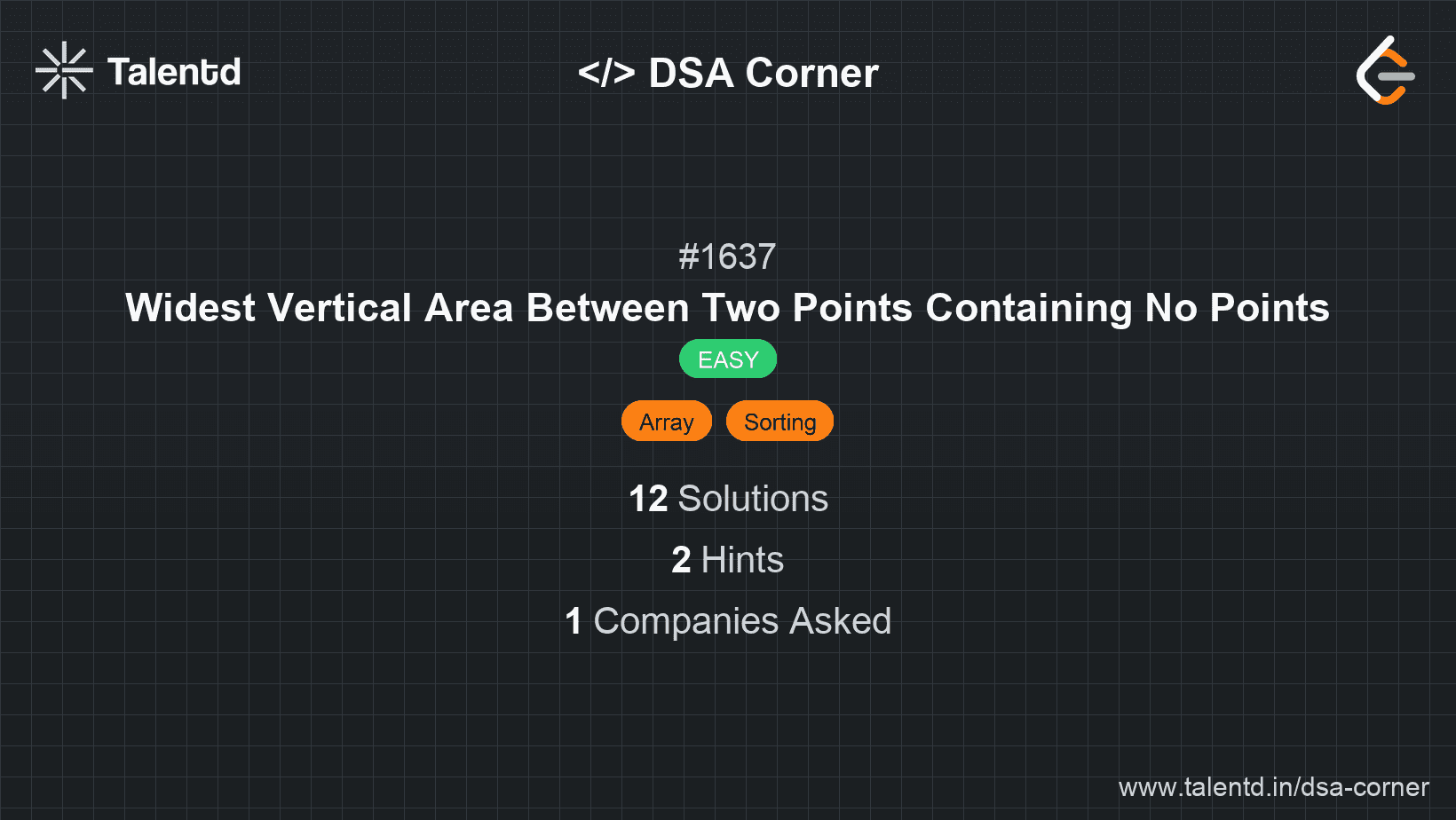
Sponsored
Sponsored
This approach involves sorting the x-coordinates of the points and then finding the maximum difference between consecutive sorted x-coordinates. This difference gives the widest vertical area between any two points.
Time Complexity: O(n log n), due to the sorting step.
Space Complexity: O(n), due to the additional array holding the sorted x-coordinates.
1function maxWidthOfVerticalArea(points) {
2 let xCoords = points.map(point => point[0]);
3 xCoords.sort((a, b) => a - b);
4 let maxWidth = 0;
5 for (let i = 1; i < xCoords.length; i++) {
6 maxWidth = Math.max(maxWidth, xCoords[i] - xCoords[i - 1]);
7 }
8 return maxWidth;
9}
10
11console.log(maxWidthOfVerticalArea([[3, 1], [9, 0], [1, 0], [1, 4], [5, 3], [8, 8]]));In JavaScript, the solution extracts x-coordinates using map(), sorts them using sort(), and calculates the max width in a loop.
Although not commonly necessary due to the constraints provided, if x-coordinates were to be over a smaller range, a variant of bucket sort could be used to place x-coordinates in a collection of buckets. This helps find consecutive x-coordinate gaps in nearly constant time, potentially improving performance by eliminating the general-purpose sort with more specialized data placement.
Time Complexity: O(n) expected when bucket conditions are met.
Space Complexity: O(m) where m is the bucket range size.
With constraints as large as those given, using a fine-grained approach like bucket sort isn't practical here; however, this explanation serves educational purposes.